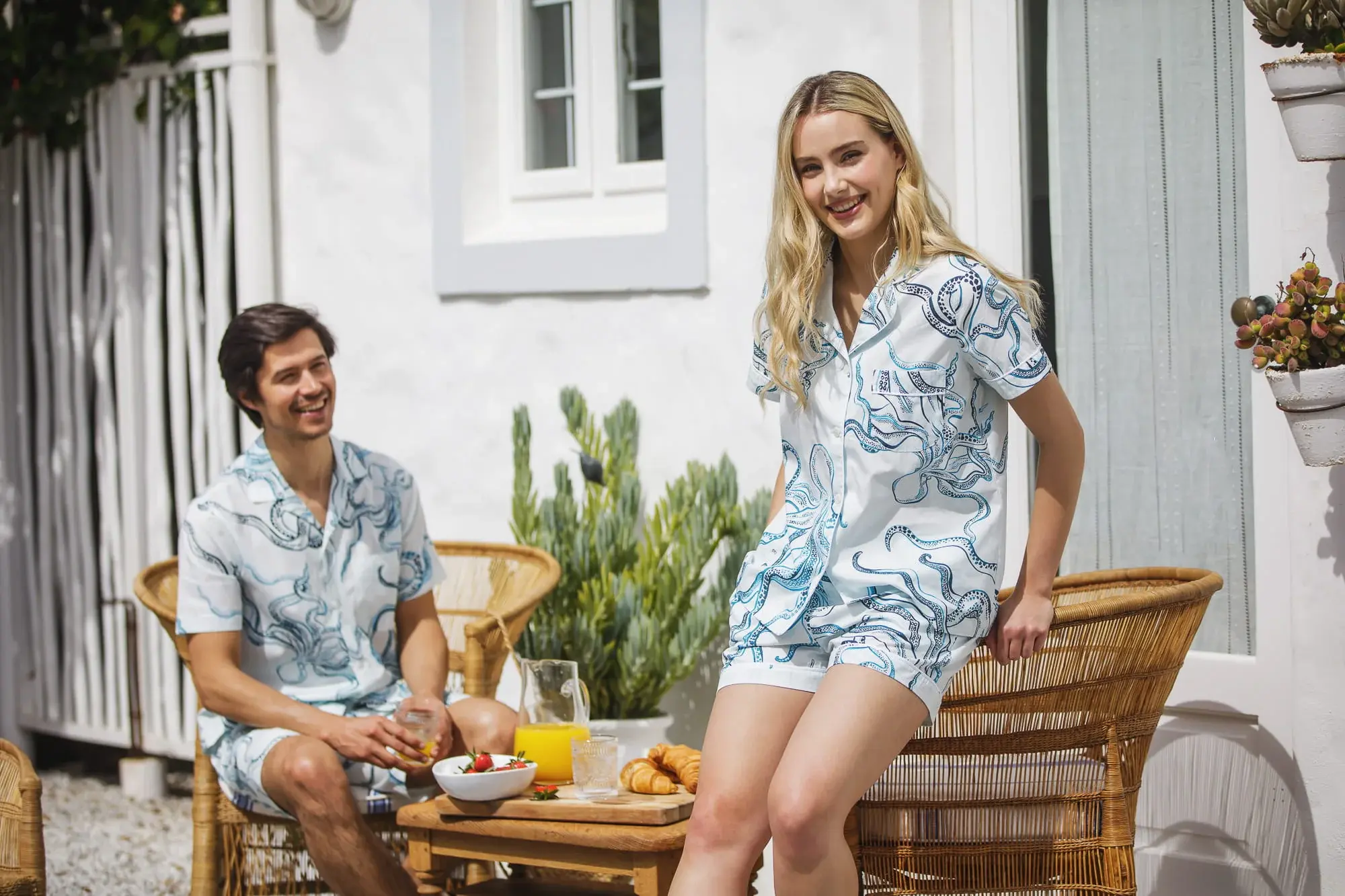Over the years, pyjama sets have undergone a fascinating transformation from simple, practical garments into stylish and versatile staples in modern wardrobes. Offering comfort and functionality, pyjamas have evolved to reflect the prevailing fashion trends, cultural shifts, and technological advancements in fabric production. This article explores the journey of the humble pyjama from its origins to its present-day incarnations, highlighting the significant changes in design and usage.
The Origins of Pyjama Sets
The word “pyjama” has its roots in the Hindi word “paejama,” which described loose-fitting trousers tied at the waist. Originally worn in South Asia, these garments were popularised in the Western world during the British colonial period. Initially worn by men, pyjamas quickly found favour as comfortable nightwear that replaced the more cumbersome nightshirts and gowns prevalent at the time. By the early 20th century, pyjama sets were widely adopted across Europe and North America.
20th Century Transformations
As the 20th century progressed, pyjama sets began to evolve rapidly, influenced by cultural and social changes. The Roaring Twenties, with its emphasis on liberation and new-found freedoms, saw pyjama styles that were inspired by loungewear and were often made from luxurious fabrics like silk and satin. These new designs allowed for greater expression of individuality and style.
The mid-20th century introduced more variety in terms of fabric and design. The inclusion of cotton, flannel, and jersey allowed pyjamas to become more accessible to a wider audience. The advent of World War II also brought functional changes, as practical and affordable options became necessary. This period saw an increase in the use of prints and patterns, reflecting the need for comfort mixed with aesthetic appeal.
Pyjamas in the Modern Era
Today, pyjama sets serve not only the traditional purpose of sleepwear but have ventured into new realms such as loungewear and even public fashion statements. This shift is partly due to cultural movements supporting the concept of home comfort as a hallmark of wellness and lifestyle.
Modern pyjama sets are characterised by their versatility and adaptability to various settings. The use of advanced textiles, such as microfibre and moisture-wicking fabrics, has enhanced the functionality of pyjamas. These materials offer breathability, warmth, or cooling capabilities, adapting to the ever-changing comfort needs of consumers.
Additionally, unisex and gender-neutral designs have entered the market, reflecting the broader societal move towards inclusivity in fashion. Designs have become bolder and more playful, with pyjamas being used to make fashion statements, sometimes even showcased on catwalks by high-profile designers.
The Fashion Statement of Loungewear
The recent years have also seen loungewear, which often includes pyjama sets, becoming a staple in everyday attire. The lines between sleepwear and casual wear have blurred, with many choosing to wear pyjamas throughout the day, thanks to the growing acceptance of casual dress codes, particularly in home office settings.
This new acceptance has encouraged designers to experiment with styles and designs, offering pyjama sets that are chic enough to be worn outside the home. With detailed attention to cuts, patterns, and embellishments, these sets are now presented in elegant forms that transition effortlessly from home to casual social settings.
Conclusion
From their humble beginnings in South Asia to their status as a fashion phenomenon, pyjama sets have come a long way. They have not only been a witness to but also a participant in cultural shifts, reflecting societal values and technological advancements. As we look to the future, it is clear that pyjamas will continue to evolve, driven by creativity, innovation, and a desire for both comfort and style.
